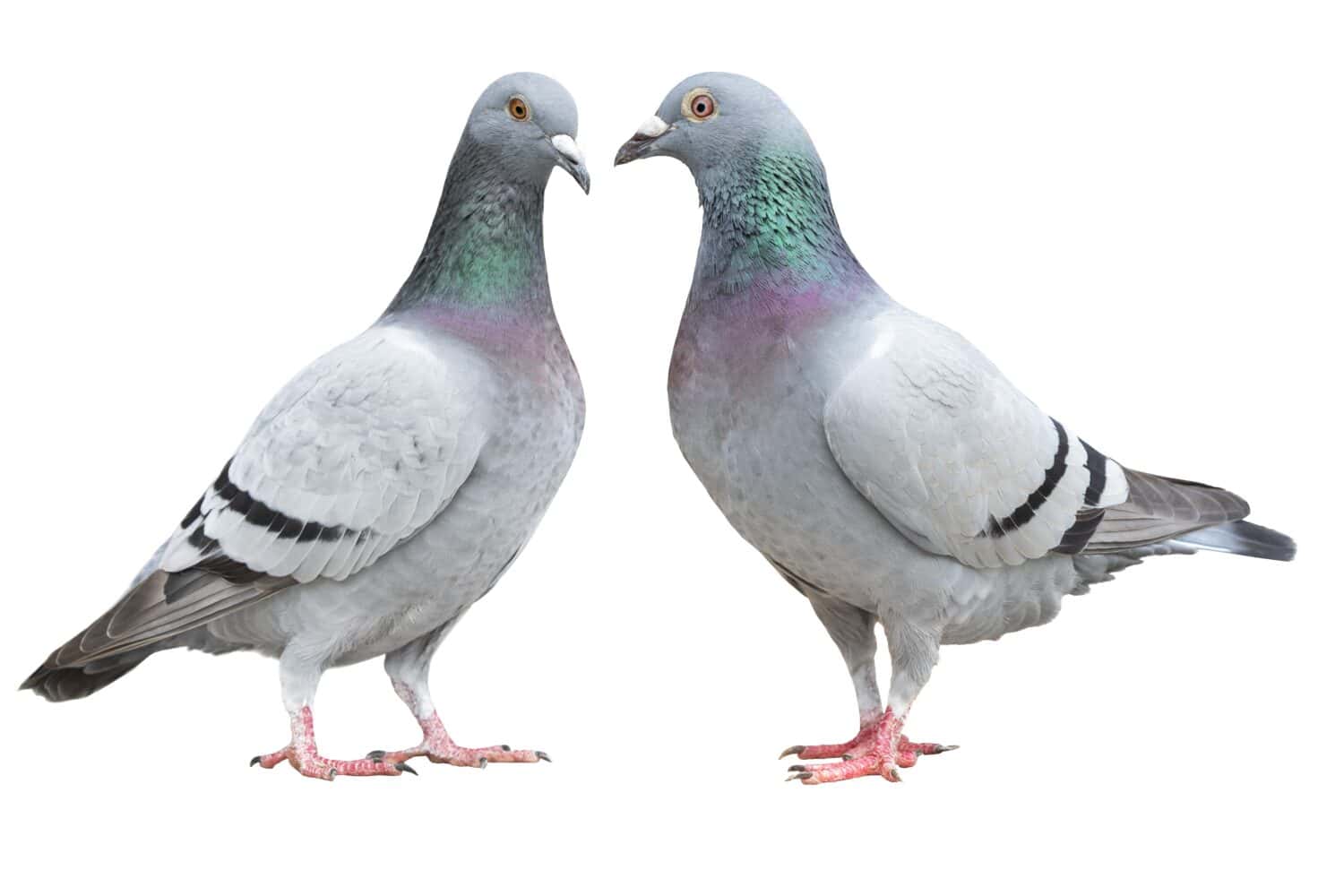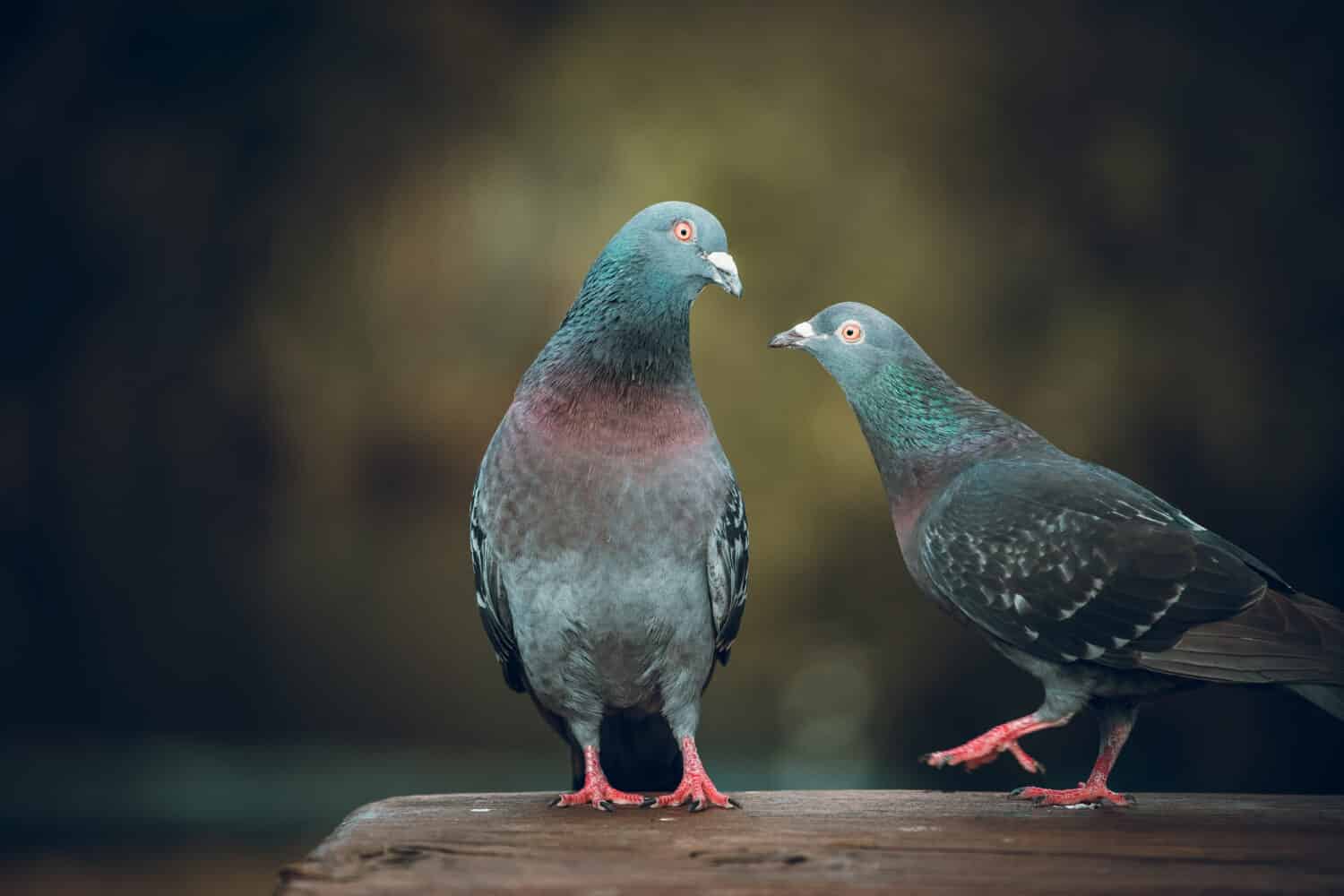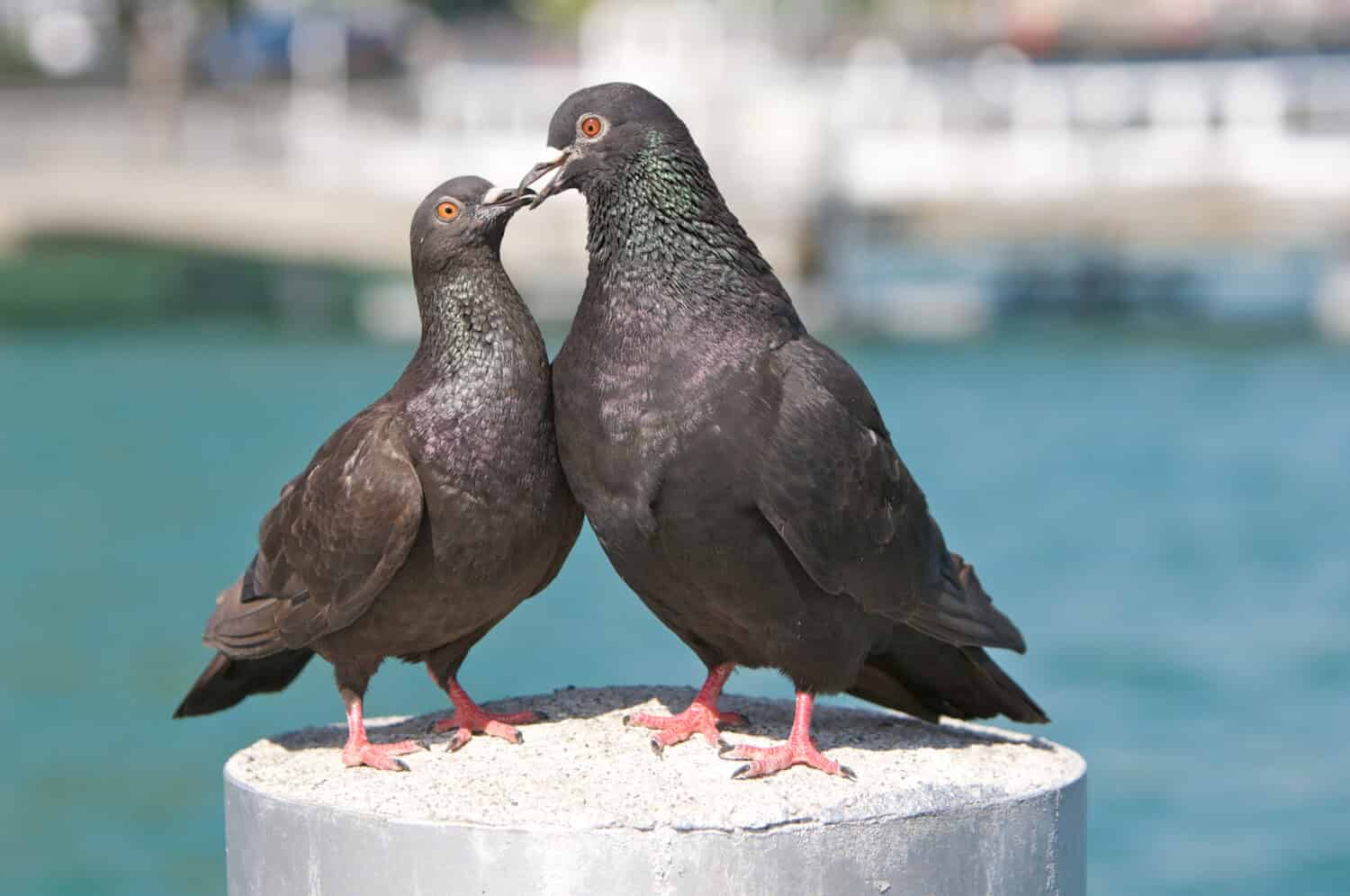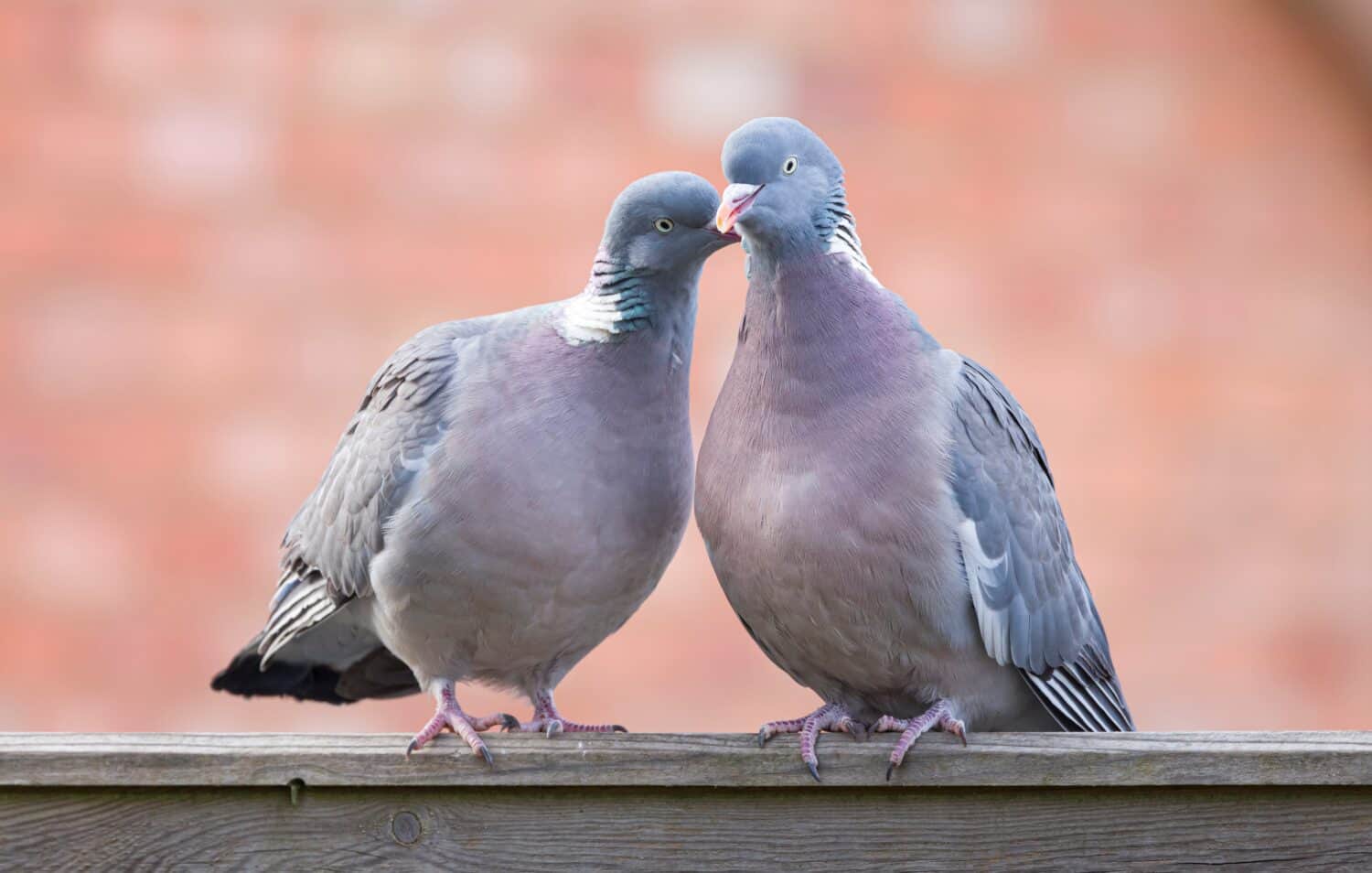It’s easy to get discouraged when determining a pigeon’s gender, but don’t be hard on yourself if it doesn’t come naturally. Distinguishing male from female pigeons is difficult for many at first, but there are a few key characteristics to look out for that make this process easy. Let’s discuss three major differences between male and female pigeons that help make identification a breeze.
Pigeons: Brief Overview

Pigeons are one of the most intelligent bird species.
©stockphoto mania/Shutterstock.com
Although often looked at as somewhat of a pest today, pigeons are magnificent birds who have served humans for a very long time. Pigeons are the oldest domesticated bird in the world. Thousands of years ago, these birds were primarily domesticated as a food source. However, as time progressed, the innate intelligence of pigeons became clear. It’s no secret that pigeons have incredible navigational prowess, and people wasted no time using it.
Pigeons have a “homing instinct” ingrained into them. This means that no matter how far you take them away from their nest, they will always return to it. As you can imagine, this was very useful before the era of technology. Sailors used pigeons to help direct themselves toward land, and many pigeons were used to deliver messages across great distances. Their utility and convenience caused people to bring them to major cities in America, where some escaped and began to breed. The easy food sources available in close proximity to humans allowed their populations to explode, and now, they’re everywhere you look!
Male vs Female Pigeons: Physical Characteristics

Pigeons and doves are members of the same family of birds.
©YIUCHEUNG/Shutterstock.com
At first glance, you might think male and female pigeons seem identical but don’t worry. Even experts would have issues identifying the gender of a pigeon based on coloration alone. However, be on the lookout for size differences. Although females have a bit of extra body mass to accommodate egg creation, male pigeons are still bigger. Male pigeons will have thicker necks, fluffier chests, and bigger heads, whereas females will look more sleek and thin.
Depending on the pigeon species, males may also have a visible crest at the back of their head. According to Bird Watching USA, this also influences the eye placement between genders, saying, “This is why the female eyes are found higher on the head compared to the males.”
Male vs Female Pigeons: Behavioral Differences

Pigeons are monogamous, and some couples mate for life.
©potomacpix/Shutterstock.com
If you’re having a hard time identifying the physical differences between male and female pigeons, it’s okay. The reality is that behavioral differences will likely be the clearest determinant of pigeon gender. Males act more aggressively with other males than they do with other females. Females tend to be calm around both genders, only becoming aggressive when scared or threatened.
Also, be on the lookout for who’s feeding whom. Have you ever seen two pigeons “kissing”? What they’re doing is sharing food, and the male pigeon is likely feeding the female. Whoever has their beak open is the male, and the pigeon who has their beak inserted in the mouth of the other is the female. This behavior isn’t always observed when a couple is close to mating. While we’re on the topic of breeding, males may also dance for the females to gauge their interest. This consists of puffing their chest out, nodding their heads, and chasing the female. If she is interested and willing, the male will climb on top of her, and mating will begin.
Male vs Female Pigeons: Vocalizations

A pigeon named Ami served as a mail carrier during World War I.
©Paul Maguire/Shutterstock.com
Many people are familiar with the sound of pigeons cooing, but did you know there are slight variations based on the pigeon’s gender? Pigeons produce a wide variety of chirps, each with a different purpose. Grunting noises usually indicate a pigeon is ready to breed, whereas trilling sounds may be an attempt to warn others that danger is nearby.
Female pigeons have softer voices and a variety of specialized coos. For example, high-pitched quick chirps are how they communicate with their young. Soft grunts indicate to males that they are receptive to mating opportunities. Male pigeons have less variance in their cooing but are generally much more vocal than females. Males will vocalize as a way to assert dominance and defend their territory. The louder they are, the more intimidating they can be.
Final Thoughts
If these methods are still giving you trouble, a surefire way of determining a pigeon’s gender is by ordering a DNA test. This option is more pricey than sight identification, but you’ll be left with a definitive answer. In addition, it may take a long time to receive your results. While you’re waiting, try practicing some of the discussed methods. Before you know it, you can determine a pigeon’s gender at a glance.
| Male pigeons | Female pigeons |
|---|---|
| Larger bodies, bigger heads, thicker necks | More sleek and thin body type |
| Aggressive around other male pigeons, calm around females | Calm around both male and female pigeons |
| Very talkative, cooing frequently | Not as talkative, but has a larger range of vocalizations |
Thank you for reading! Have some feedback for us? Contact the AZ Animals editorial team.







